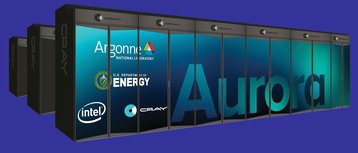The US Department of Energy's Argonne National Laboratory is considering spending $15-20 million on a storage cluster to support its supercomputer fleet.
The laboratory has published a request for information for a "storage system that will provide both the capacity and performance necessary to support our deployed systems as well as future systems currently being planned."
Among the systems it would support is Aurora, set to be the world's most powerful supercomputer after optimization at 1.25 exaflops (and, eventually, two exaflops). Also mentioned is the 44 petaflops Polaris supercomputer.
"The Argonne Leadership Computing Facility (ALCF) has deployed multiple high speed parallel file systems to support the data generated by researchers and computational scientists. These include two 650 GBps 100PB Lustre file systems, both using Infiniband HDR," RFI documents state.
"The ALCF is exploring the possibility of a storage solution that will provide the bandwidth, reliability and scalability required for the next-generation of HPC and AI systems."
Roughly ~400PB of storage is desired, with a peak throughput of ~6TBps and peak IOPS of ~240Mps. It must be POSIX compliant and capable of 30,000 node concurrent mounts.
The ALCF also expects five years of support and a smaller version of the system to run tests on.
The lab also specifically asked for a description of how a system would support artificial intelligence and machine learning workloads, and mentions large language models.
"The response must propose what can be delivered by a Q2CY25 delivery target, and additionally what could be delivered by a Q4CY25 delivery target if the additional half a year would provide enough time for new technologies."




